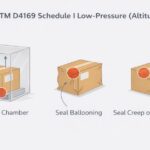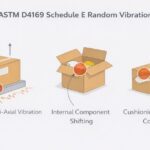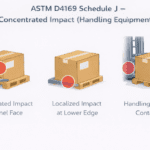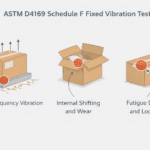Bacterial endotoxins are a hidden-but-dangerous threat for medical devices that contact circulating blood, cerebrospinal fluid, or internal tissues. These pyrogenic substances—produced by Gram-negative bacteria—can trigger fever, inflammation, and even septic shock in patients.
That’s why Bacterial Endotoxin Testing (BET) is a required safety and compliance step in medical devices and pharmaceuticals. But how do you know when it’s needed? And what happens if your device fails BET?
In this post, I’ll break down the science behind BET, how it’s performed, why it matters for regulatory compliance, and how to determine whether your device requires it.
Learn more about our Validation Services here.
What Are Endotoxins?
Endotoxins are structural components of the outer membrane of Gram-negative bacteria, such as Escherichia coli. When these bacteria die and disintegrate—through sterilization, processing, or degradation—they release lipopolysaccharides (LPS) into the surrounding environment.
These endotoxins might not be destroyed by sterilization, which means even a sterile medical device can cause pyrogenic reactions in a patient if endotoxins are not controlled.
What Is Bacterial Endotoxin Testing (BET)?
BET, also referred to as LAL testing (Limulus Amebocyte Lysate), is used to detect the presence of these pyrogens on or in medical devices and pharmaceuticals. The most common BET methods include:
- Gel-Clot Method – a qualitative test based on gel formation
- Chromogenic Method – a quantitative colorimetric test
- Turbidimetric Method – a quantitative measurement of optical density
All these methods are based on the LAL reagent, which is derived from the blood of the horseshoe crab and reacts specifically to LPS. Modern methods may use recombinant protein factors to replace LAL.
Why Is BET Required for Pharmaceuticals and Medical Devices?
For parenteral drugs, implants, and devices that contact certain sterile body areas, a “non-pyrogenic” label claim is expected. For such products, the manufacturer must demonstrate that endotoxin levels are below strict regulatory limits. BET is required because endotoxins, even in very low amounts, can cause serious adverse effects in patients.
The U.S. Food and Drug Administration and international regulators mandate BET as part of:
- Premarket submissions (e.g., 510(k), PMA)
- Routine quality control
- Product release
Regulatory Limits and Compliance
Regulatory agencies define allowable endotoxin limits based on the route of administration. For example:
- Low-volume parenteral drugs or devices in contact with circulating blood: 0.5 EU/mL or 20 EU/device
- Devices in contact with the central nervous system: 0.06 EU/mL or 2.15 EU/device
- Invasive devices with prolonged or long-term contact: 20 EU/device
These limits are enforced globally through standards like:
- USP <85>: Bacterial Endotoxins
- USP <161>: Medical Devices—Bacterial Endotoxin and Pyrogen Tests
- ISO 11737-3: Sterilization of health care products — Microbiological methods — Part 3: Bacterial endotoxin testing
- AAMI ST72: Bacterial Endotoxins— Test methods, routine monitoring, and alternatives to batch testing
If your product exceeds these limits, safety and quality of the product are at risk. Additional cleaning, validation, or investigation may be required to remediate concerns.
What Happens If BET Fails?
Failing BET results are typically considered major quality events. You may need to:
- Investigate potential contamination sources (e.g., water, manufacturing, laboratory handling)
- Conduct root cause analysis and issue a Corrective and Preventive Action (CAPA)
- Revalidate your cleaning or manufacturing process
In some cases, retest and/or 2x resampling can be admissible with rationale. Regulators will expect documentation justifying such actions, to avoid the appearance of “testing into compliance.”
How Do You Know If BET Is Required?
For topical drugs, BET generally isn’t required. With parenteral drugs, the expectation is to run BET on each batch. With medical devices, product classifications and regulatory pathways can complicate the answer. That’s why we’ve created an interactive tool to help.
Try the BET for Medical Devices Requirements Checker
Use our quick diagnostic tool below to see whether BET is required, and if routine testing or revalidation is recommended for your product.
Final Thoughts
Bacterial Endotoxin Testing is more than a box to check—it’s a critical safeguard for patient safety and regulatory compliance. At Life Science Outsourcing, we work with startup innovators and global OEMs alike to validate, troubleshoot, and optimize BET programs across a wide range of devices and pharmaceuticals.
If you’re unsure whether BET applies to your device—or need help documenting compliance for FDA or other regulatory submissions—reach out to our microbiology team. We’ll help you interpret the standards, build a defensible testing strategy, and ensure your devices are both safe and audit-ready.
Contact Us to speak with an expert or schedule a complimentary review of your testing program.
Jeffrey Chuang is the in-house microbiologist at Life Science Outsourcing. He specializes in BET, sterilization validation, and regulatory testing strategy for medical device manufacturers. He previously developed and validated a proprietary, rapid, LAL test method for multi-billion-dollar cell therapy products.





